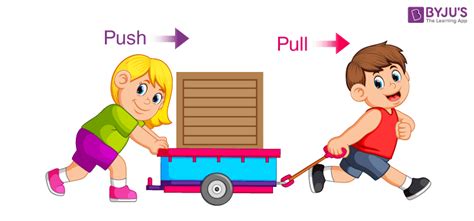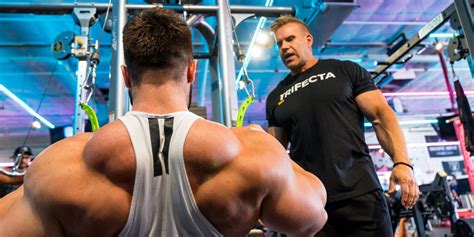What training split optimizes muscle growth, energy & peak performance for men?

For men dedicated to maximizing their physical potential, the choice of a training split is more than just a schedule – it’s a strategic decision that directly influences muscle hypertrophy, sustained energy, and the ability to perform at peak capacity. With an array of options available, from full-body routines to highly specialized body part splits, understanding the nuances of each can unlock superior results tailored to individual physiology and lifestyle.
Understanding the Core Principles of Training Splits
A training split dictates how you divide your body’s muscle groups across your weekly workouts. The goal is to stimulate muscle protein synthesis sufficiently for growth, allow adequate recovery, and manage systemic fatigue. Key factors influencing a split’s effectiveness include training frequency (how often a muscle group is trained), volume (total work performed), and intensity (how hard you train).
Optimizing these variables for men often means balancing the desire for high-volume, intense sessions with the need for recovery, especially as testosterone levels and recovery capacity can fluctuate with age and lifestyle. The ‘best’ split isn’t universal; it’s highly dependent on individual experience, recovery capabilities, and specific goals.
Popular Training Splits and Their Impact on Men’s Fitness
Full Body Training
Full body workouts involve training all major muscle groups in each session, typically 2-4 times a week. This split offers high frequency for muscle groups, which is excellent for stimulating protein synthesis repeatedly. It’s often recommended for beginners due to its effectiveness in building foundational strength and muscle, and for intermediates looking for efficient training. However, the total volume per muscle group per session must be managed to avoid excessive fatigue and allow for subsequent workouts.

Upper/Lower Split
An Upper/Lower split divides workouts into upper body days and lower body days, usually performed 2-4 times a week (e.g., Upper, Lower, Rest, Upper, Lower, Rest, Rest). This split offers a good balance of frequency and volume per session. Men often find this effective for targeted muscle growth without overtaxing any single muscle group too frequently. It allows for higher volume per session than full body, while still hitting muscle groups twice a week for consistent growth signals.
Push/Pull/Legs (PPL)
The PPL split organizes exercises based on movement patterns: Push (chest, shoulders, triceps), Pull (back, biceps), and Legs (quads, hamstrings, glutes, calves). Typically done 3 or 6 days a week, PPL allows for high frequency (training each muscle group twice a week in a 6-day cycle) and significant volume per muscle group per session. This logical grouping of muscles minimizes overlap fatigue and is highly effective for muscle growth and strength gains, making it a favorite among intermediate to advanced lifters.

Body Part Split (Bro Split)
The Body Part Split dedicates each workout to one or two muscle groups (e.g., Chest on Monday, Back on Tuesday, etc.). This approach allows for very high volume and intensity for a specific muscle group in a single session. While effective for advanced lifters seeking to bring up lagging body parts or for those who thrive on maximum focus per muscle group, its low frequency (training each muscle group only once a week) can be less optimal for overall muscle protein synthesis compared to higher frequency splits. It demands excellent recovery capacity and nutritional support.

Optimizing for Muscle Growth, Energy & Peak Performance
Muscle Growth (Hypertrophy): For men, consistent muscle protein synthesis is key. Splits that allow for hitting muscle groups 2-3 times a week (Full Body, Upper/Lower, PPL) are often superior for hypertrophy. The focus should be on progressive overload – increasing weight, reps, or sets over time – regardless of the split. The higher frequency ensures muscles are constantly being stimulated to adapt and grow.

Energy Levels: Managing central nervous system (CNS) fatigue is crucial for sustained energy and performance. Splits with adequate rest days or alternating muscle groups (like Upper/Lower or PPL) help distribute the training load, preventing burnout. For individuals with demanding jobs or lifestyles, a 3-4 day full body or upper/lower split might be more sustainable, allowing for better recovery and higher energy levels for non-training activities.
Peak Performance: Achieving peak performance in strength or athletic endeavors often requires fresh muscles and a primed CNS. A split that prevents overtraining and allows for skill practice or heavy lifts on non-fatigued days is ideal. For strength athletes, a carefully periodized PPL or Upper/Lower split can allow for high-intensity training sessions without compromising recovery.
Choosing Your Optimal Split
The ‘best’ training split for men is a dynamic choice that evolves with experience, goals, and lifestyle. Consider these factors:
- Training Experience: Beginners often thrive on full-body routines for rapid foundational strength. Intermediates might benefit from Upper/Lower or PPL for more focused growth. Advanced lifters might experiment with body part splits or highly customized routines.
- Time Commitment: How many days a week can you realistically commit? 2-3 days suit full-body; 4-5 days suit Upper/Lower or PPL; 5-6 days suit PPL or Body Part Splits.
- Recovery Capacity: Factors like sleep, nutrition, stress, and age influence recovery. If recovery is limited, a lower frequency or less demanding split might be better.
- Specific Goals: Are you chasing raw strength, maximal hypertrophy, or athletic performance? Your goal will heavily influence the ideal frequency and volume distribution.

Conclusion
There’s no single perfect training split that optimizes muscle growth, energy, and peak performance for all men. The most effective approach involves understanding the principles behind different splits, experimenting to see what your body responds best to, and being willing to adapt your routine as your goals and life circumstances change. Prioritize consistency, progressive overload, adequate nutrition, and sufficient rest – these foundational elements, combined with a intelligently chosen training split, will pave the way for sustained progress and optimal physical development.









